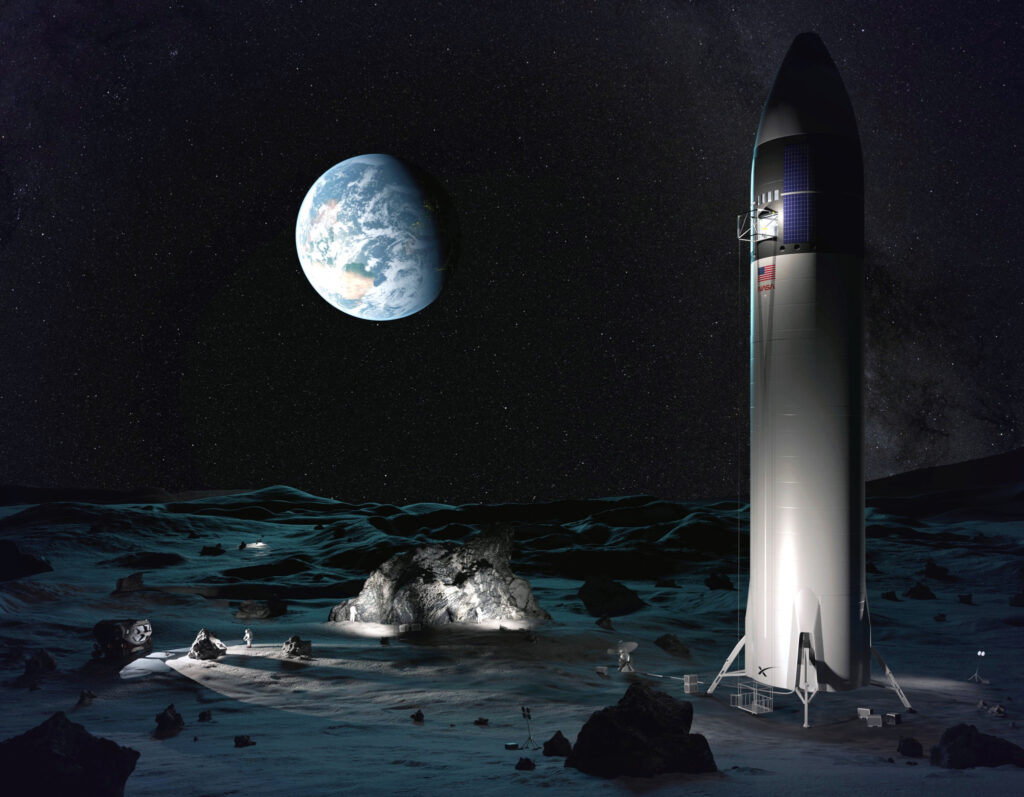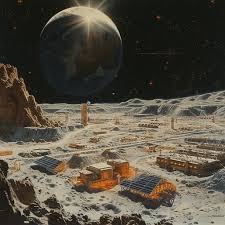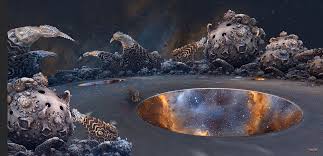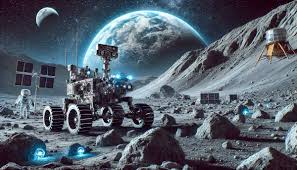Lunar Terraforming Pods for Space Colonization

Introduction
As humanity prepares for long-term space exploration, one of the biggest challenges is creating self-sustaining habitats on the Moon and Mars. Traditional space stations rely on supplies from Earth, which is costly and unsustainable for deep-space colonization. To solve this issue, scientists are developing Lunar Terraforming Pods, advanced bio-domes that can generate their own oxygen, grow food, and recycle water, making human settlement on other planets more feasible.
Design and Functionality
Lunar Terraforming Pods will be fully enclosed ecosystems, equipped with AI-controlled climate systems to regulate temperature, humidity, and air composition. These domes will house genetically modified plants, selected for their ability to thrive in low-gravity and high-radiation environments. The goal is to mimic Earth’s carbon cycle, allowing plants to absorb carbon dioxide and produce oxygen while also providing a sustainable food source.

Additionally, the pods will feature closed-loop water recycling systems, ensuring that astronauts have a continuous supply of clean drinking water. Waste materials will be broken down by microbial bio-reactors, converting organic waste into fertilizers and biogas for energy production. These innovations will create a self-sufficient habitat where humans can survive without constant resupply missions from Earth.
Advanced AI Integration
The Terraforming Pods will rely on artificial intelligence (AI) to monitor and adjust environmental conditions in real-time. AI will regulate:
- Oxygen and CO₂ Levels – Preventing atmospheric imbalances.
- Temperature and Humidity – Maintaining ideal conditions for plant and human survival.
- Water Recycling Efficiency – Ensuring maximum reuse of available water.
- Radiation Protection Measures – Adjusting shielding layers based on solar activity.
This AI-driven system will make necessary adjustments without human intervention, ensuring that astronauts can focus on research and exploration rather than habitat maintenance.
Potential for Future Space Colonization

The development of Lunar Terraforming Pods is a stepping stone toward sustainable extraterrestrial colonization. These systems will first be tested on the Moon, where they can provide insights into long-term survival in harsh environments. Once proven effective, similar habitats can be deployed on Mars and even deep-space stations, enabling future generations to live and work beyond Earth.
Conclusion

Lunar Terraforming Pods represent a groundbreaking innovation in space exploration. By creating self-sustaining ecosystems, these advanced bio-domes will enable long-term human habitation on the Moon and beyond. With continued advancements in AI, bioengineering, and space technology, these habitats may one day serve as the foundation for permanent extraterrestrial colonies, paving the way for humanity’s expansion into the cosmos.

